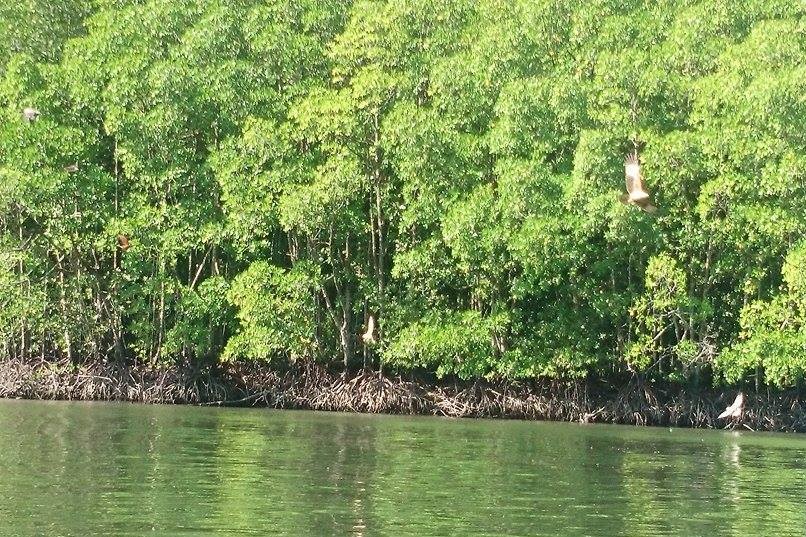The soothing sea breeze swept across our faces as the high speed boat raced through the waters. A cruise along Kilim river taught us about the importance of conserving the environment as we went on a quest to replant mangrove trees.
Day 3 of BRATs Langkawi 2015 started off early in the morning as 20 of us young journalists headed to Kilim Jetty to take on nature. Although we were still exhausted from yesterday’s assignments but hey, the show must go on right?
Starting off day 3 strong at Kilim Jetty! #TeamMayLee pic.twitter.com/amtSioHHcq
— BRATs (@starbrats) December 4, 2015
We were joined by members from Rotary Club Langkawi. They briefed us on our itinerary and then distributed spades, hoes and gloves to us. Also acting as our “tour guides” for the day were Dr. Sandra Ramasamy and her husband, Dr. Vasanthan Saigaran, practising doctors that came to Langkawi to open up their own clinic as well as contribute back to environment by joining the Rotary club. The lovely duo gladly explained the unique qualities of Langkawi as we cruised along Kilim river.
Cruising the rivers to get to the mangroves! #TeamMayLee pic.twitter.com/7LbUp8LXUE — BRATs (@starbrats) December 4, 2015
Our first destination was the fish farm. We gained insights on the marine life reared and working conditions on the farm when we interviewed Mohamad Khairi, a 20 year old who works there.
Here are interesting sneak peeks of our experience there.
Khairi, a worker at fish farm feeding the sting ray! #BRATs #TeamMayLee
Posted by Kenneth Choong on Friday, 4 December 2015
BRATS at the fish farm! Caution level: horseshoe crab #TeamMayLee pic.twitter.com/WTC6hlHb9M
— BRATs (@starbrats) December 4, 2015
Feeding at Kilim Fish Farm! #throwback #TeamMayLee #BRATS pic.twitter.com/FZSkTN2p4W — Kenneth Choong (@kennethchoong96) December 4, 2015
We then headed to Teluk Mempelam, where we first cleaned the beach before having lunch. In just a short duration of 30 minutes, we collected 7 full bags of trash! All of us were disgusted with the amount of litter scattered everywhere; cement bags, plastic bottles and even old rags were found half buried in the sand after being left by irresponsible tourists.
 After lunch, we continued our cruise along the river and reached a spot where eagles soared through the skies, at times swooping low enough to glide across the river.
After lunch, we continued our cruise along the river and reached a spot where eagles soared through the skies, at times swooping low enough to glide across the river.

Spot the eagles!
After visiting the eagles, we headed on to the bat cave. Selvakumaran Rajamanickam, a nature lover, was enthusiastic in explaining our surroundings when we got to the bat cave. Inside the cave, the ceiling was so low at parts that we had to crouch to pass through it. On the way, we could see numerous black bats hanging upside down. Last but not least, we went to the riverside to complete our assignment which was to plant mangrove seedlings.
Planting mangrove trees! That’s what I call teamwork! #TeamMayLee pic.twitter.com/xxohdRW3Li — BRATs (@starbrats) December 4, 2015
It was really uplifting that we got to do something for mother nature today. All the sweat was worth it in the end. If
That’s a wrap for day 3!
Although exhausted, it is a day well spent! Do mother nature a favour and it will thank you! #TeamMayLee pic.twitter.com/slpFiHWbeZ — BRATs (@starbrats) December 4, 2015
Let us all do something for mother nature, however small it might be, for it is our only home.



Tell us what you think!